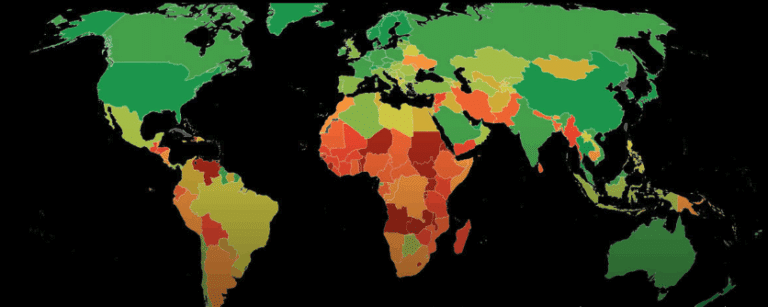Last year, according to BP’s Statistical Review of World Energy, Latin America produced 8.6 million barrels of oil per day (bpd), nearly 9% of the world’s total oil output. Although Mexico and Venezuela have traditionally been the region’s two dominant producers, Brazil has now overtaken them both and will remain the leading Latin American producer for the foreseeable future. In July, Brazil’s output – almost all of it from offshore fields – reached a record 2.78 million bpd.
In fact, some regard Latin America as the world’s new oil frontier, and think that the region could potentially add three million bpd to global output during the next decade. But, although Brazil is well placed to ramp up production, achieving such an increase in regional output would require Mexico and Venezuela to reverse their ongoing production declines. And that does not seem realistic.
In Brazil, the oil sector is likely to attract $22 billion worth of investment this year and a similar amount in each of the next five years. As a result, production is expected to increase to around 3.7 million bpd by 2025.
Brazil’s “pre-salt” area – where large oil reserves are trapped beneath a thick layer of salt under the ocean floor – is already producing more than 1.5 million bpd. And on November 6, the Brazilian government is expected to raise nearly $26 billion by auctioning four more pre-salt concessions, in blocks that have 6-15 billion barrels of proven oil reserves. By 2024, production under these contracts alone could add 500,000 bpd to Brazil’s oil output.
Although Mexico is the region’s second-largest oil producer, its output has steadily declined since peaking at 3.6 million bpd in 2004. Production in 2018 was just 1.8 million bpd, the lowest since 1980. That mostly reflects the continued decline of the Cantarell oilfield, once one of the world’s largest. Cantarell now produces only 45,000 bpd, compared to two million bpd in 2004.
The Mexican energy ministry says that by 2024 – when President Andrés Manuel López Obrador (AMLO) completes his current term – state-run oil company Pemex will be producing one million more bpd than it does now. In addition, Pemex plans to build the 340,000-bpd Dos Bocas refinery in the state of Tabasco at an estimated cost of $8 billion.
This is too optimistic, to say the least. Pemex owed $107 billion at the end of 2018, making it the world’s most indebted oil company. And, because the company recently lost its investment-grade rating, the government will need to provide the additional capital. But to keep the fiscal deficit under control, the government would have to crowd out public spending on infrastructure and services, at a significant economic and social cost.
Mexico has better ways to finance increased oil production. For example, the country’s private pension funds could invest, say, $25 billion in joint ventures with Pemex that would specialize in recovering more oil from existing and maturing fields. But AMLO seems highly unlikely to consider this option.
In addition, AMLO’s government could seek more private investment in the oil sector – the main aim of the previous administration’s 2013 energy reforms. Auctions under that government resulted in 107 new contracts that could yield up to 500,000 bpd of additional production during the next 10-15 years. In 2017, for example, a private operator announced the discovery of the Zama field, which has at least 600 million barrels of recoverable oil. However, Pemex, which owns an adjacent block, now wants to operate Zama. As a result, prospects for increased private-sector oil production in Mexico look highly uncertain, especially after AMLO’s decision to put new auctions on hold.
Argentina, meanwhile, has relied on higher oil production from the Vaca Muerta shale fields to offset a steep decline in conventional output. The country’s total production, currently at 500,000 bpd, could reach 650,000 bpd in the mid-2020s and 800,000 bpd in the early 2030s. Achieving this would show that other countries can follow the lead of the United States in using hydraulic fracturing, or fracking, in a sustainable way. But although fracking does not seem to be a divisive issue in Argentina, the victory of the Peronist Alberto Fernández in the October 27 presidential election will have a crucial impact on the country’s overall investment climate.
Colombia, by contrast, has endured legal challenges to unconventional oil production. The country’s current oil output of 886,000 bpd is expected to decline in the next few years because of very low reserves (currently equivalent to 6.2 years of production). Fracking could increase Colombia’s oil reserves to over ten years of production, and raise output by 50%. But such projects may not take off for years.
Finally, most analysts agree that Venezuela’s oil production has declined to 700,000-800,000 bpd, although the exact figure is uncertain. Venezuela has vast reserves – the world’s largest by some estimates – but increasing production will require time and capital, and will happen only after political stability has been restored and a new regulatory framework is in place. That looks like a more distant possibility than it did at the beginning of 2019.
In the final tally, instead of producing an additional three million bpd by 2025, Latin America will probably manage only one million bpd more, with Brazil accounting for the entire increase. AMLO’s government seems highly unlikely to make the bold policy changes Mexico will need to produce another one million bpd. An extra one million bpd from Venezuela, meanwhile, will require a change of government, a revised constitution, and new legislation regulating the oil sector. Meanwhile, the most important implication of higher production in Argentina is that it would show that fracking can succeed outside North America. If Colombia follows suit, it can attract billions in foreign investment and avoid the decrease in output that now seems inevitable.
Still, the reality is that – on top of the one million bpd that Brazil will add – the world should not count on too much additional oil supply from Latin America to meet global demand. More important, oil is not likely to reignite economic growth in Latin America, unless there are important changes in the region’s current politics.





